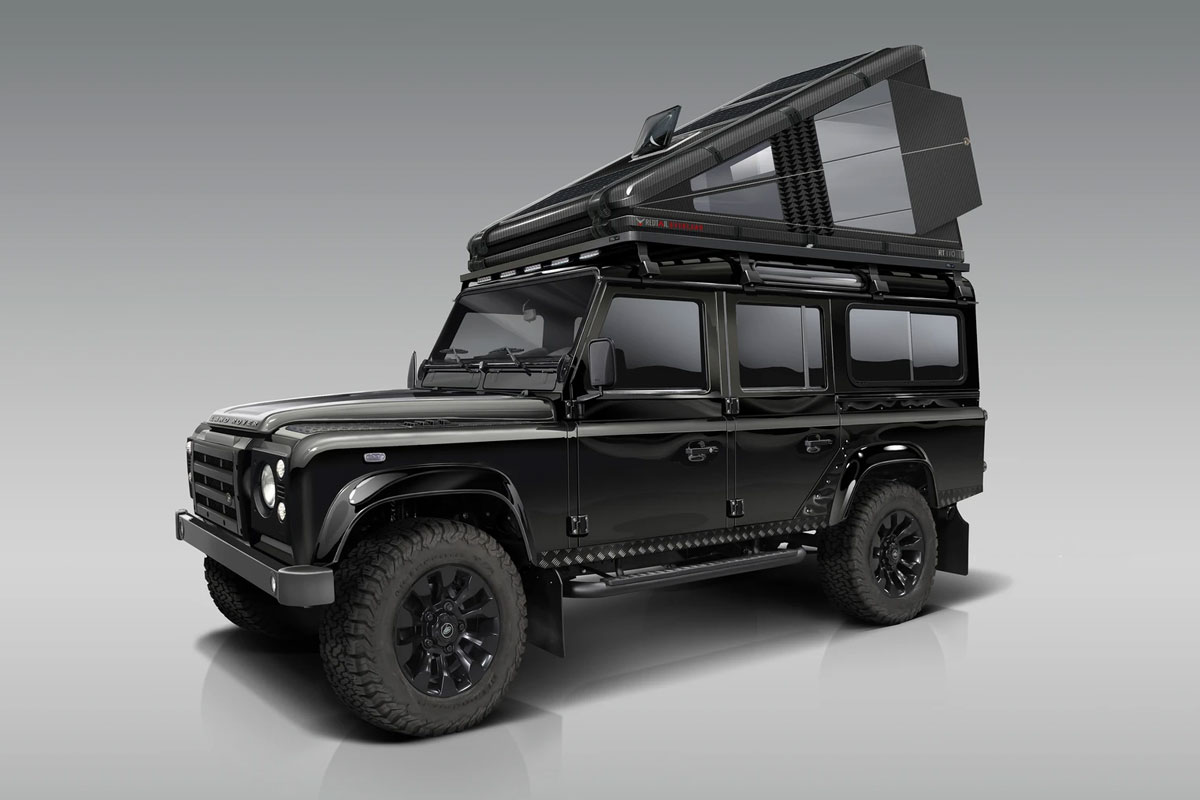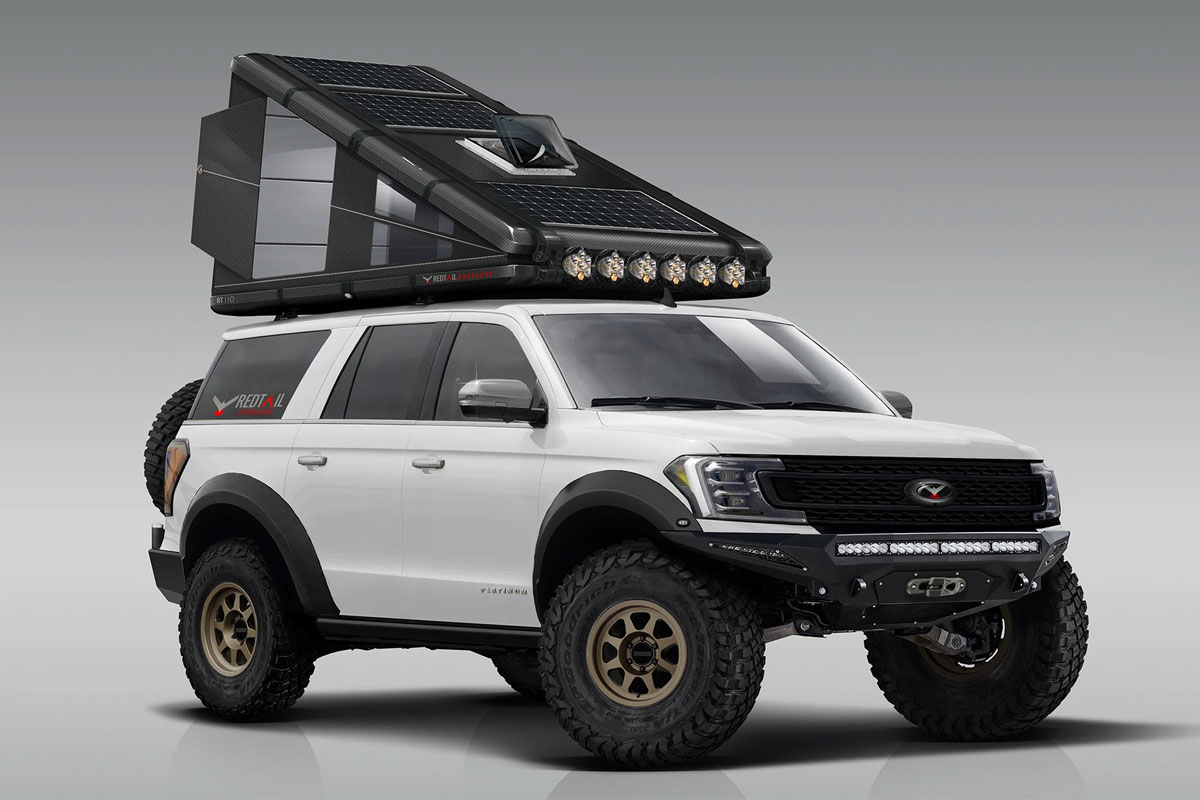The overlanding industry has been booming for the last decade, thanks in part to social media. Scrappy entrepreneurs from all over the world are building camper vans, rooftop tents, teardrop trailers, and everything in between to fulfill the growing consumer base. Most overland enthusiasts are either diehard trailer towers or swear by the comfort and convenience of their rooftop tent. Redtail Rooftop Camper (RTC) attempts to bridge the gap between the two by dramatically leveling-up the comfort, form factor, and protective element of their yet-to-be-released Redtail 90 and Redtail 110.
Husband and wife duo Ty and Annie Tatro worked at Earthromer for a combined 18 years. They witnessed the company’s astronomic growth with its luxurious and capable campers and were inspired to do their own thing. They founded Redtail with a mission to produce innovative and premium overland equipment, the RTC is their first product offering, and it looks incredible.
To accommodate the variety of vehicle applications on the market, the RTC comes in two sizes: RTC 90 and RTC 110. The RTC 90 weighs in at 190 pounds and measures 90 inches in length. The RTC 110 is slightly heavier at 250 pounds and longer by 20 inches to accommodate taller overland enthusiasts.
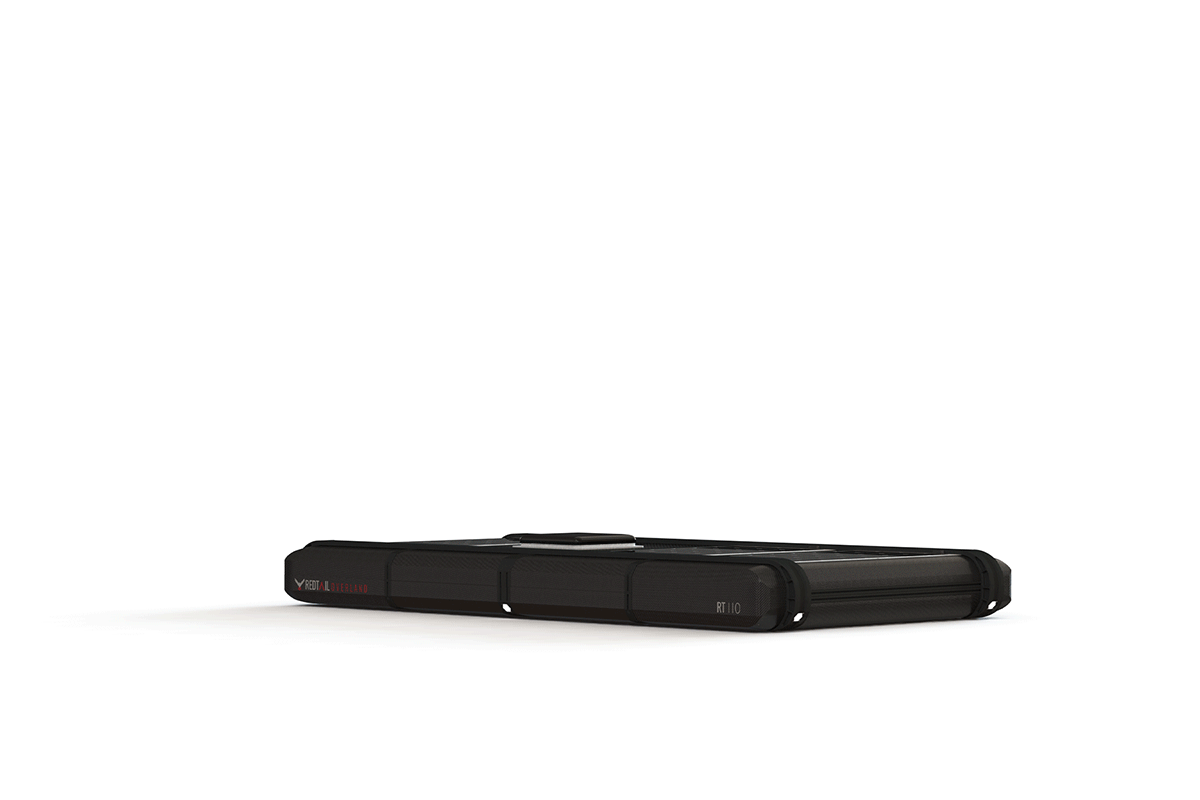
Each shell is composed of insulated carbon fiber composite; unlike other hard-shelled rooftop tents, Redtail built this thing with one material for the entire shell. Each model will come equipped with billet aluminum side brackets that allow for accessories to be hung and mounted, and all of the hinges and fixtures are stainless steel.
One unusual feature is that the RTC is built so strong that you can mount bike and ski racks, RotopaX jugs, and just about any other camping accessory on top of the camper. A load-bearing roof is a unique feature for a rooftop tent as typically, the mechanical system that opens and closes the unit isn’t strong enough for additional weight. The RTC allows you to reclaim the space you’d potentially lose with a rooftop tent.
The interior of the RTC will feel more like a luxury hotel than a traditional camper. The walls are upholstered and supple and have incredible insulation from the elements. For very chilly climates, Redtail has added a Webasto diesel heater, which produces heat at an efficient rate and is very safe compared to propane heaters. It self-adjusts for elevations of up to 11,000 feet. One last touch worth noting is a variable speed fan, which pulls stale air out of the cabin to keep the atmosphere fresh.
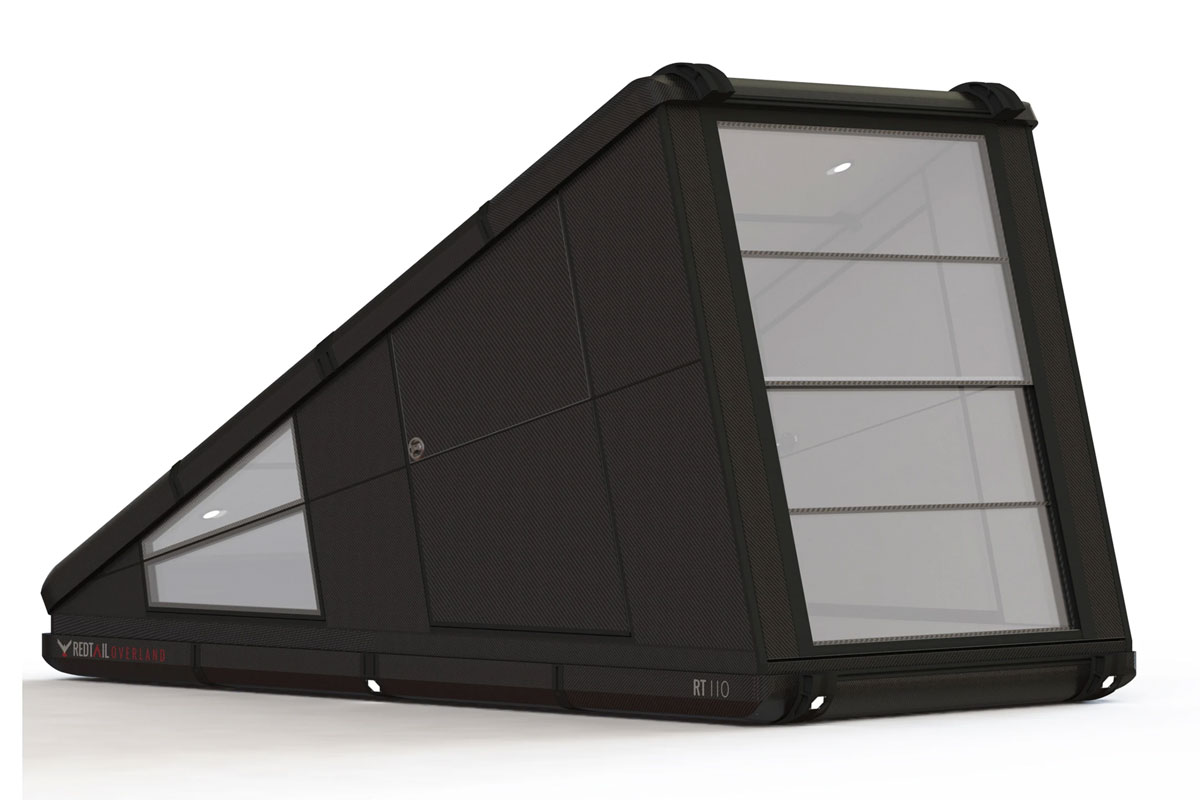
Redtail included a robust electrical system to ensure that the lights and fan run for hours, all while you keep your devices juiced from the USB ports in each corner. Interior electrical power comes from large solar panels on the top of the camper. The 110 features a 330-watt solar array, while the 90 has 210-Watts. The solar array feeds into a lithium-ion battery system, rated at 60 amp hours (ah) on the 110 and 40ah on the 90.
Once you’re ready to break down camp and hit the long and dusty road, the RTC packs up tightly and conveniently thanks to an automated system you control from your smartphone. All you have to do is push a button, and the camper opens and closes, no more messing with pesky latches and climbing up the side of your vehicle to do so.
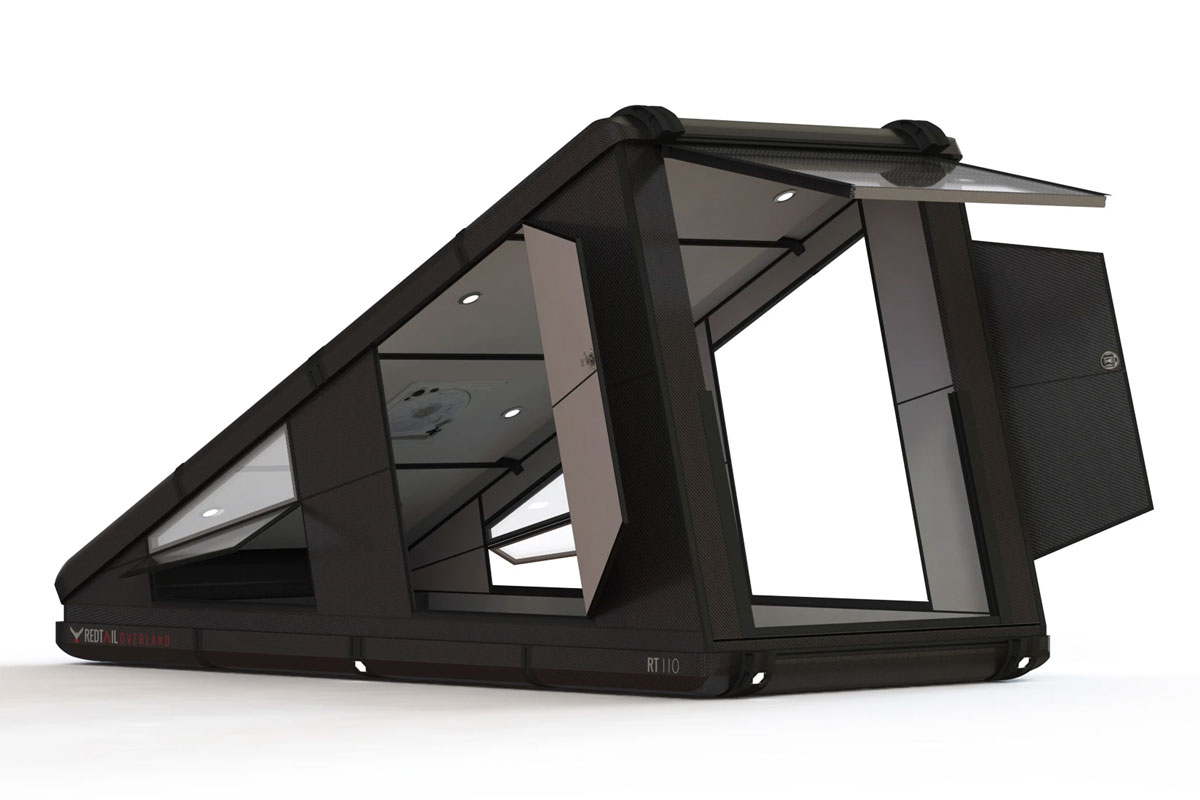
This isn’t some rooftop tent your buddy bought off Craigslist; the RTC commands a serious price tag. The Redtail Overland Camper lands at $20,000 and $25,000 for the 90 and the 110 RTC models, respectively. Production will begin this month at Redtail’s manufacturing facility in Colorado, and each camper will be hand-built.
To learn more about Redtail, their story and products, visit their website, and while you’re there, plop down a deposit for your own RTC, they’re sure to be in high demand!
